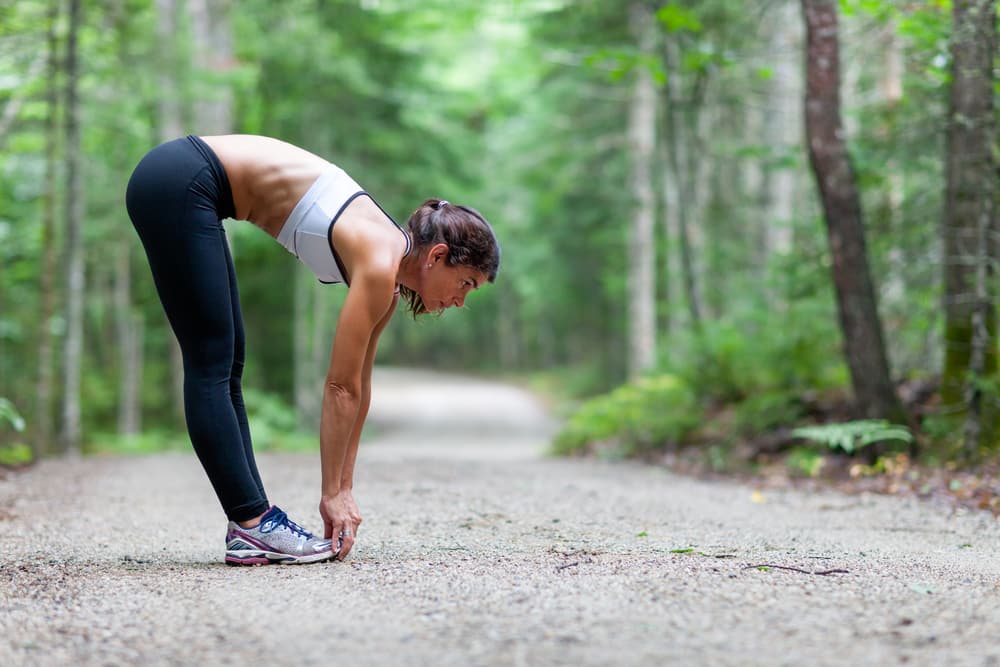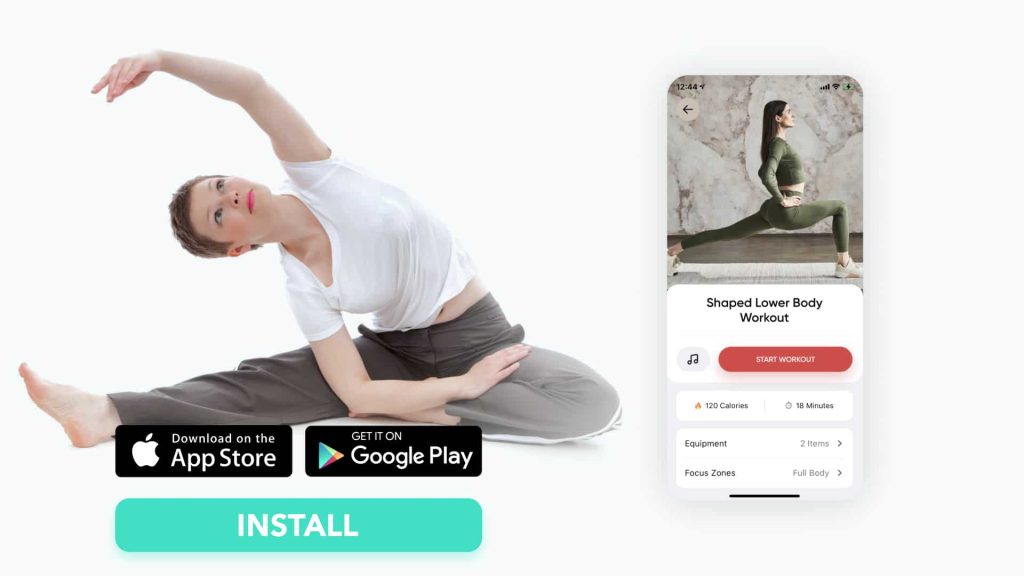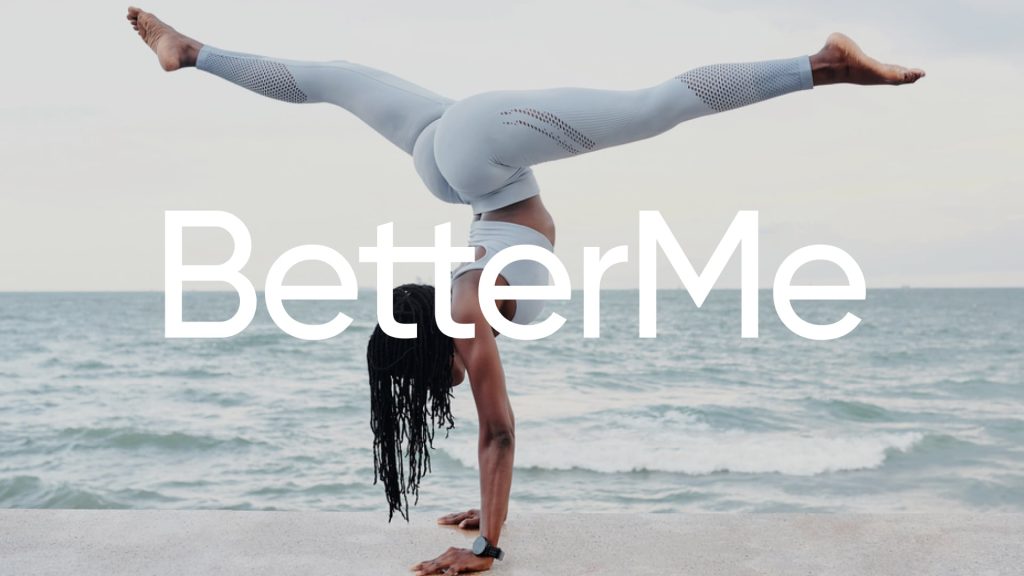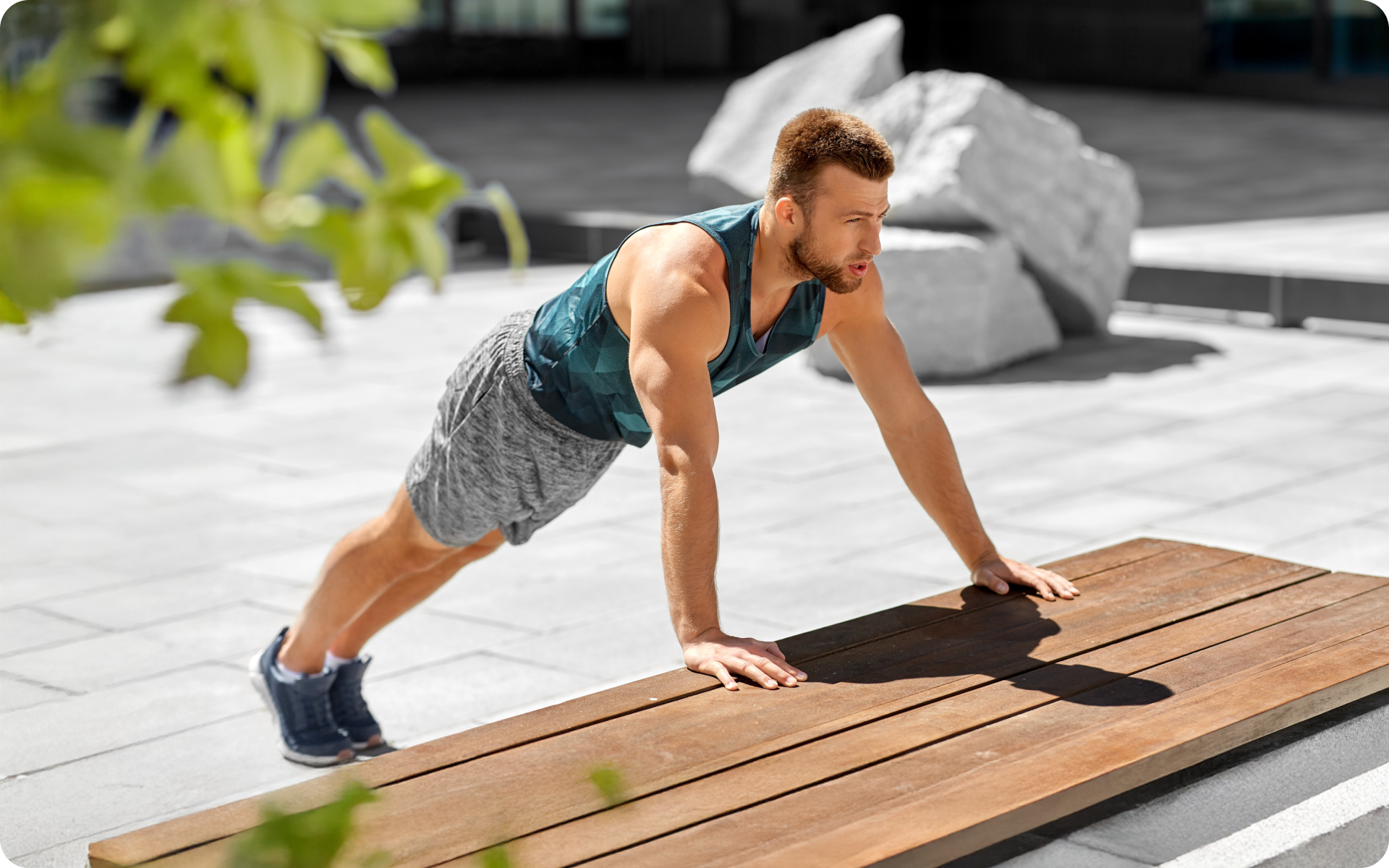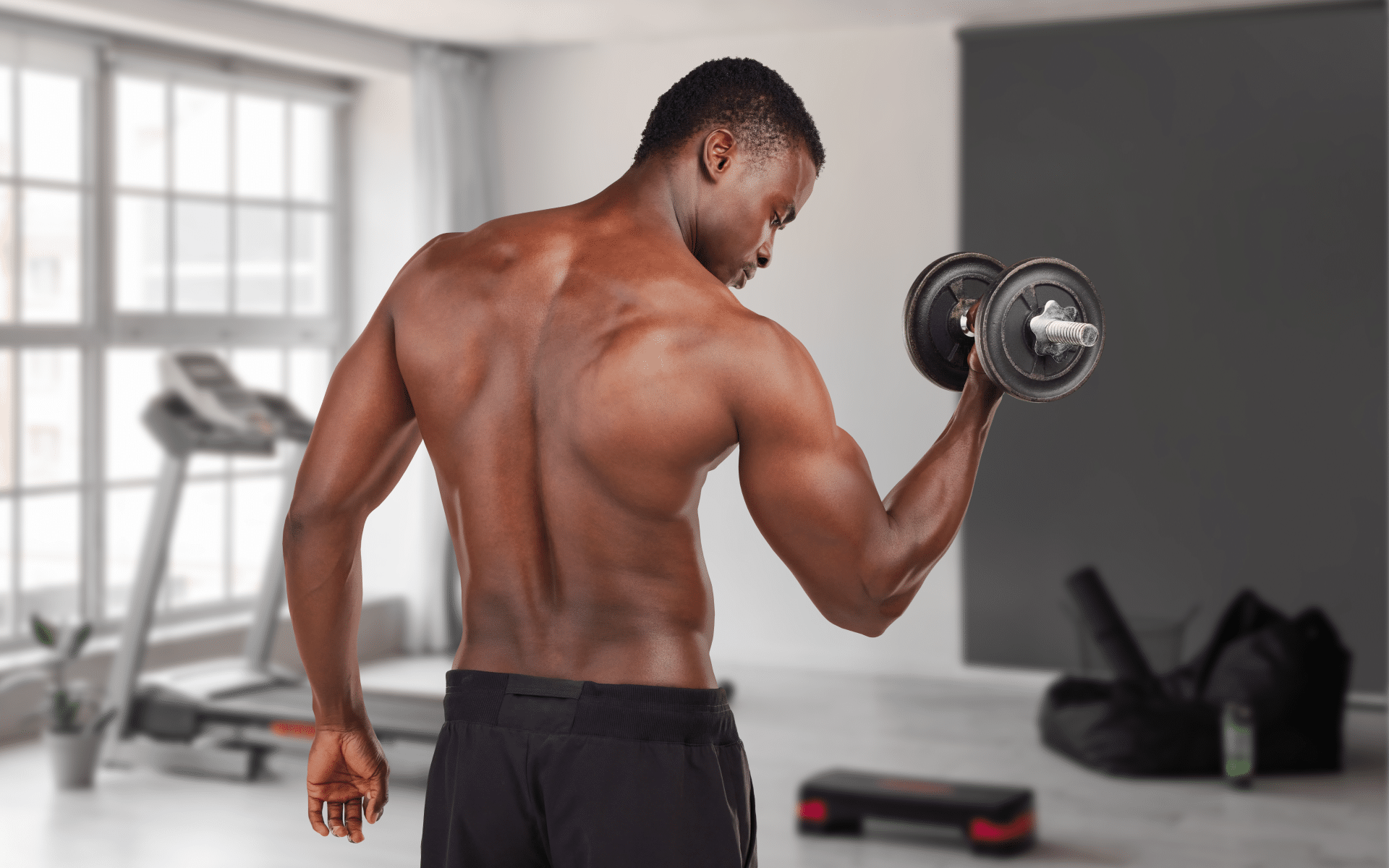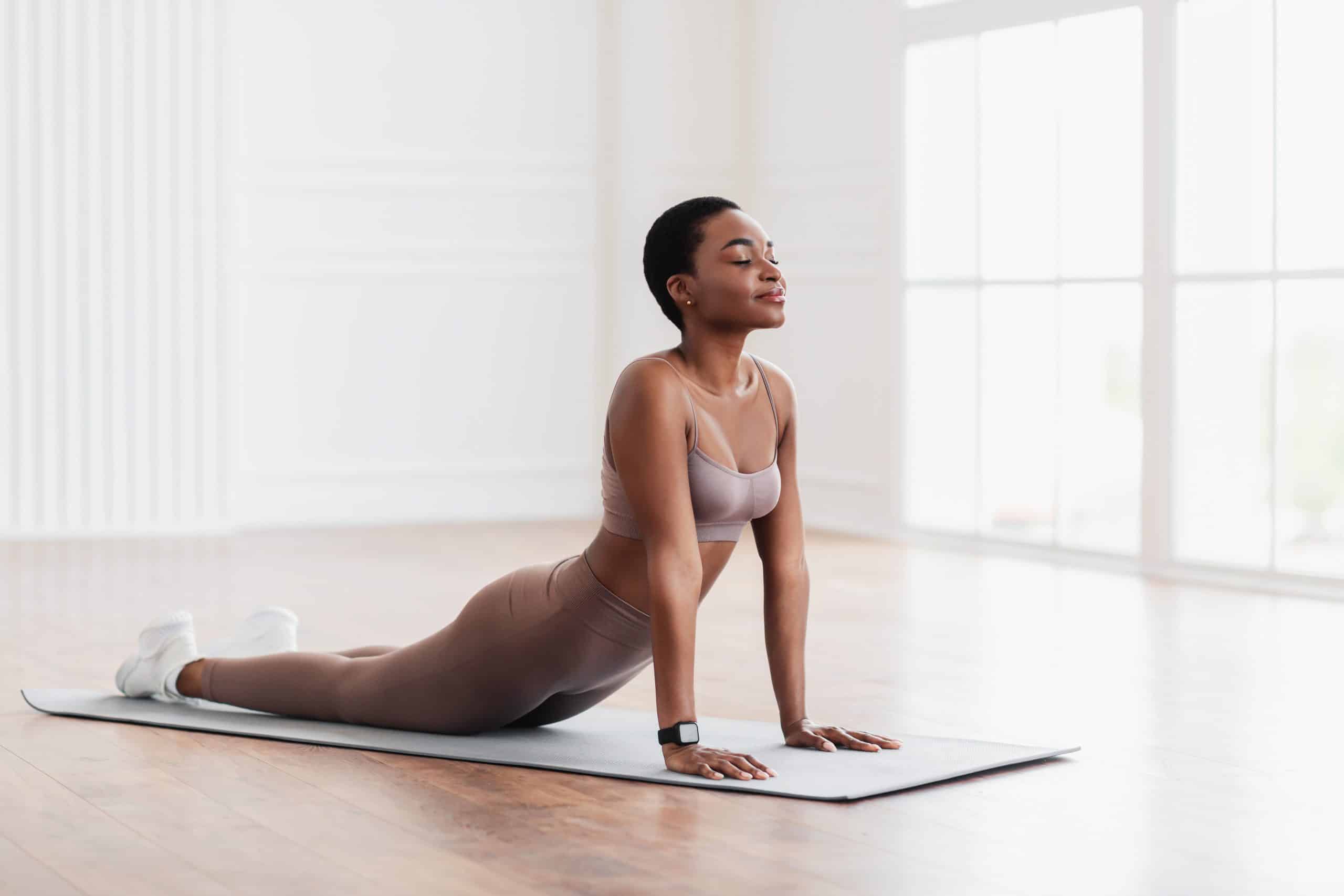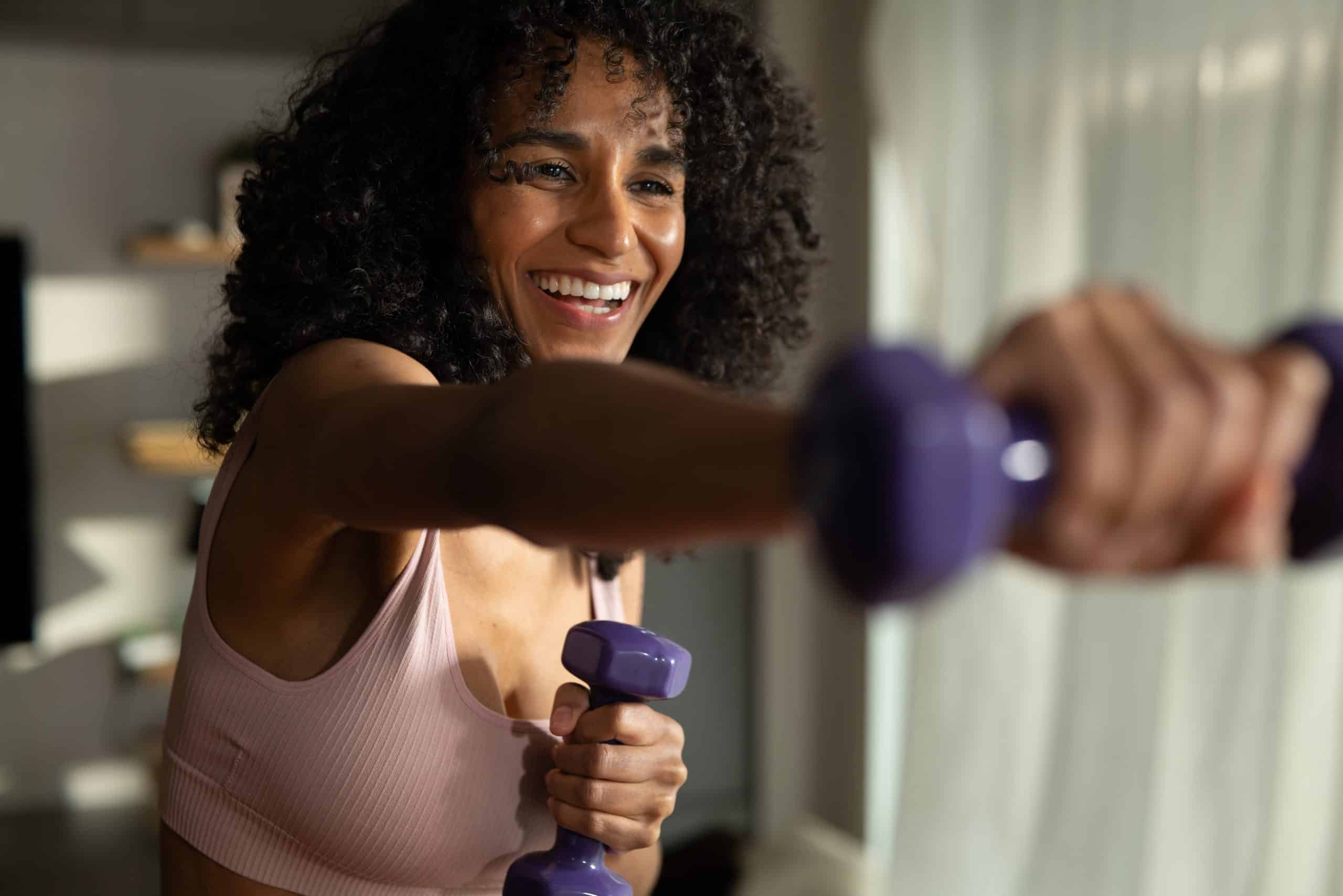Oblique Stretches
There are alot of different training plans out there. Whether a full-body workout for men or women or locally-targeted exercises for areas such as upper chest, calves, belly or arms, you can find whatever you’re looking for. Not all of the training plans, however, that you could find on the internet will include safe and well-planned physical activities. For example, some of them may not incorporate the warm-up period, which is highly important for the beneficial exercise of your body.
Get your personalized
meal plan!
Any warm-up will include a bit of cardio to increase the blood flow, which improves the effectiveness of the training that follows. Stretching is integrated with the cardio to stabilize your muscles and body structure so you can avoid injuries. In this article you will find out more about the stretches for the muscle group known as obliques; why they are so important and what are the tips for improved stretching and performance.
What Are The Oblique Muscles?
Let’s begin this look at how to successfully perform oblique stretches by first understanding what the oblique muscles are and where they are located. Oblique muscles are a muscle group by your ribs and upper body sides. They are a part of your core and consist of two groups – external and internal obliques (1). The WebMD dictionary defines external obliques as abdominal muscles located on both sides of the torso ( 2). Internal obliques are muscles that are on the inner side of the external obliques (4).
Why Are Oblique Stretches Important?
There are people who feel they don’t really need stretches due to prevalent flexibility or the minor role they play in their training. However, besides one’s range of flexibility, there are a lot of other benefits that are available through the process (6). We should not underestimate the importance of stretching before and after a workout. Take a look at a shortlist of the positive effects:
-
Treats And Prevents Back Pain
When you don’t stretch, muscles stiffen and become less flexible over time, causing back pain. This is why regular performance of lower back and oblique stretches may either prevent or treat back pain issues (7).
Read More: Stretching Exercise For Beginners: Getting Your Blood Flowing And Your Muscles Ready To Move
-
Supports Proper Muscle Functioning
It is general knowledge that stretches can increase your flexibility. Oblique stretches involve the use of your abdominal muscles, promoting their proper functioning, which in turn prevents and even treats slipping rib syndrome and neuralgia (8).
-
Improves Recovery
Stretching abdominal muscles helps them to return to full motion, speeding up recovery, and allowing you to have your next workout sooner.
-
Prepares Your Body For The Training
When you stretch before the workout, you warm up your body, preparing the muscles for the following exercising routine, and this leads to improved physical performance and prevention of possible injuries (3).
Tips For Effective And Safe Stretching
Now that you have a good base on how important stretching is for your body, you may want to get to it right away and give it all you’ve got. Take a word of caution, this could turn out to be the wrong approach and even cause certain injuries. If you want this process to go smoothly and safely, here are two main recommendations:
-
Take Your Time
You should never rush the process of stretching. If you are short on time, then it may be better if you cut out some of the exercises in your workout rather than cutting out your proper stretching. Avoid rapid movements and make sure that you hold each stretch for at least twenty seconds.
-
Don’t Push Yourself Too Hard
Everyone has their own limits and keeping within them while doing stretches can not be overemphasized. If you don’t listen to your body and instead overdo the stretches, the result could be an injury or a mass of overstretched muscle tissues, making them thinner and weaker (5). Whenever you encounter slight pain, it is better to stop and relax your muscles. In this way, you’ll prevent the occurrence of any possible negative consequences.
Whether you’re a workout beast or just a beginner making your first foray into the world of fitness and dieting – BetterMe has a lot to offer to both newbies and experts! Install the app and experience the versatility first-hand!
Oblique Stretches
The following oblique stretches may be included in the warm-up or just after any workout. You can combine them or choose one or two that you like the most and incorporate it into your exercising routine. Even one stretch makes a great difference in your body. Here are some of the oblique stretches you can use:
-
Standing Side Bend Stretch
Stand straight, stretch your arms upward, and connect the palms of your hands over your head. Bend your body to the side as far as your flexibility allows. Hold the stretch for half of a minute. Now do the same on your other side. Repeat the exercises as many times as needed ( 9).
-
Seated Twisting Stretch
Sit on the floor and stretch out your legs in front of you. Put your right foot on the outer side of your left knee so that your foot is crossing your left leg. Pull the bent knee of your right leg to your chest or use it as a pillar to rotate your torso to the right. Hold this position for 15 seconds, then repeat the same sequence of movements with your left foot crossing the right knee.
-
Lying Bent Leg Oblique Stretch
Lie down on your back and bend your knees, placing your feet flat on the mat. Drop both knees to the right, using a swivel motion to lower them to the floor until you feel a stretch. Keep both shoulders on the floor. Let your left knee resting on top of your right knee. You may stretch out your arms to the sides to avoid the lifting of your shoulders. Hold this position for 15 seconds, then repeat on the other side.
-
Seated Lateral Stretch
This stretch is similar to the standing side bend stretch. Sit on the mat or a chair, with your legs in a comfortable position. Raise your right arm above your head and bend your upper body to the left, now lower your right arm slightly to the left. Hold for 20 seconds, return to the initial position and then bend to the right with your left hand raised this time.
Yoga And Oblique Stretches
Among all the workouts, yoga is one of the richest in stretches. As it involves a lot of anaerobic, static exercises, which test your flexibility, with time you can develop your muscles and effectively stretch them. Yoga is also very conducive to stretching due to its low threshold for physical requirements and its “forgiving” nature, meaning that you may perform any movement by applying effort as you like and not pushing your limits. Although meditation and proper breathing techniques have a central role in yoga, the following poses are presented simply for their physical benefits and can be included in your workout as common stretching exercises. Here are some easy yoga oblique stretches:
-
Triangle Pose (Trikonasana)
Stand on the mat, with your feet double shoulder-width apart. Your left foot should point straight to the front while your right heel is perpendicular to your left foot (right foot toes pointing to the right). Lean your torso to the right, touching the top of your right foot or your right shin with your right hand while pointing your left arm vertically upwards. Turn your head so that you face your left arm. Hold the position for 20 seconds (or less, if you start experiencing discomfort), and repeat, changing sides.
Read More: Types Of Stretches To Loosen Up Your Body From Head To Toe
-
Cobra Pose (Bhujangasana)
Lie down, facing the floor with the top of your feet flat on the mat. With your arms stretched out in front, press down on your hands while keeping your arms straight, lifting your torso off the ground. As you do this leave your pelvis, thighs, knees, and feet pressed to the mat. Hold the pose for 15-25 seconds, then return to the lying position. If needed, repeat.
-
Cat-Cow Pose (Chakravakasana)
This pose is a combination of two poses – cat (marjaryasana) and cow (bitilasana). To perform this stretch stand on all fours, then arch your back, pulling your head down. Next lift your head up, extending your neck. Allow your torso to bend, your belly to lower and push your hips upward. Slowly repeat the transition from one movement to another.
Conclusion
Although sometimes people tend to underestimate the importance of stretching, it plays a huge role in the overall healthiness and fitness of your body. The oblique stretches may help you not only to increase flexibility, but also prepare you for the workout, reduce the occurrence of back pain, improve your recovery pace and just make you feel refreshed and toned. One of the most stretching-rich workouts is yoga, so if you are familiar with its practices, you have a wealth of knowledge in terms of stretches. If you don’t like this sort of regime, there’s a huge variety of dedicated exercises that are able to make a great contribution to your training plan. Take note to remember not to rush your stretching process and not to push your limits, as it may likely cause certain injuries. Before implementing any new practices into your workout routine, please consult with a specialist.
DISCLAIMER:
This article is intended for general informational purposes only and does not address individual circumstances. It is not a substitute for professional advice or help and should not be relied on to make decisions of any kind. Any action you take upon the information presented in this article is strictly at your own risk and responsibility!
SOURCES:
- A b d o m i n a l M u s c l e A n a t o m y (2020, physio-pedia.com)
- External obliques (2006, dictionary.webmd.com)
- Guide to stretches (2020, mayoclinic.org)
- Internal obliques (2006, dictionary.webmd.com)
- ls It Possible to Overstretch? (n.d., webmd.com)
- Stretching and flexibility (2019, mayoclinic.org)
- Stretching and strengthening are key to healing and preventing back pain (n.d., health.harvard.edu)
- What is slipping rib syndrome? (2014, medicalnewstoday.com)
- Your Guide to Stretching & Flexibility (2012, hr.umich.edu)
